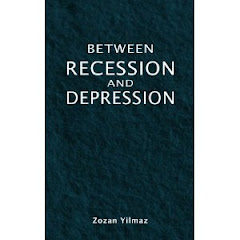Finance theory categorises investors’ attitudes to risk under three headings as risk averse, risk neutral and risk lover. The first is where investor prefers less risk to more, second where investor is indifferent to risk and finally the third where investors prefer more risk for less.
Conventional wisdom is that investors are risk averse. The higher the risk they associate with a particular investment, the higher the return they will demand. According to portfolio theory, the main risk investors will ask return for is the systematic/market risk, which is the part that can not be removed through diversification and measured by beta. – The correlation of any stock’s return with the market-
During the last three decades of boom period, we breached this wisdom by taking risks beyond the capacity funded by debt assuming the bull market will go on. The result is well known as a global financial system brought to the edge of collapse.
Now we are all risk averse. UK government’s failed bond auction on 25th March is the evidence of how dramatically risk averse we have been. Germany had the same painful experience earlier this year. We are used to experience this with emerging markets but when it is the world’s 5th and 4th largest economies respectively you are talking about, then you stop and think.
The investors’ concern is understandable when you look at the facts that planned UK government borrowing of £350 billion for financial years of 2009-10 & 2010-11 is GREATER than total borrowed by successive rulings and governments of Britain between 1691 and 1997. Mervyn King’s loud concern makes more sense after taking this fact into consideration.
The yield on the 10-year UK Gilt climbed 7bp to 3.02 per cent in the third week of March 2009. A sign that investors are nervous about buying UK government debt and asking for premium for the perceived risk
Is there another option? Domestic demand is contracting mainly by consumption and investment items of GDP. Government item needs to increase its share to fill the big hole left from the former two and borrowing is the only funding option.
Monetary policy is already in place with bank rates near zero. Four million tracker mortgages will enjoy reduction in the mortgages they pay, if not yet so and hopefully this will boost consumption. Low interest rates should theoretically cause investment to increase but the current climate is making this item most difficult to play its role given the reluctance of the banks to lend, uncertainty surrounding the global economy, spare capacity. Another barrier for private investment item is the crowding effect created by the government borrowing.
But there is no solution to keep all sides happy. One or more sides have to pay for the cost. In this instance it seems to be partly private investment in lack of fund, depressed demand and government in having to bailout the private sector.
Let’s hope these efforts give fruits soon.
My nephew

My niece

My book

Search This Blog
Scribnia Ranking
Blog Archive
- May (2)
- March (1)
- February (1)
- January (21)
- December (27)
- November (13)
- October (2)
- August (10)
- July (5)
- June (4)
- May (2)
- April (6)
- March (5)
- February (4)
- January (10)
- November (2)
- September (6)
- August (4)
- July (2)
- June (10)
- May (2)
- March (1)
- January (1)
- December (1)
- November (1)
- September (1)
- August (1)
- May (1)
- April (1)
- March (3)
- February (2)
- January (4)
- December (10)
- November (2)
- October (1)
- September (1)
- June (1)
- April (5)
- March (3)
